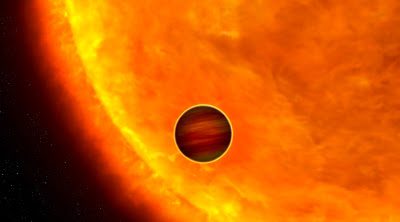

| Online: | |
| Visits: | |
| Stories: |

| Story Views | |
| Now: | |
| Last Hour: | |
| Last 24 Hours: | |
| Total: | |
TradCatKnight: Planet-consuming ‘Death Star’ exposed in new study
Planet-consuming ‘Death Star’ exposed in new study
HIP68468′s composition “points to a history of ingesting planets,” according to the research, published in the journal Astronomy & Astrophysics.
“It doesn’t mean that the sun will ‘eat’ the Earth any time soon,” said the report’s co-author, Jacob Bean, assistant professor of astronomy and astrophysics at University of Chicago, explaining how the planet contains “four times more lithium than would be expected for a star that is 6-billion-years old.”
“Our discovery provides an indication that violent histories may be common for planetary systems, including our own,” Bean says.
READ MORE: Pie-oneering meat pastry makes bold journey into space (VIDEO)
“It’s as if we saw a cat sitting next to a bird cage.If there are yellow feathers sticking out of the cat’s mouth, it’s a good bet that the cat swallowed a canary,” added Debra Fischer, a professor of astronomy at Yale University.
Located 300 light years away, HIP68468 was first discovered in 1995 but it’s only now that its appetite for planets as well as its first exoplanets are coming to light through observations from the La Silla Observatory in Chile last year. A super Neptune and a super Earth are believed to orbiting the star, although researchers say this “needs to be confirmed.”
It’s thought the super Earth is orbiting so close to HIP68468 that one full orbit takes three days.
“It can be very hard to know the history of a particular star, but once in a while we get lucky and find stars with chemical compositions that likely came from in-falling planets,” Fischer said. “That’s the case with HIP68468. The chemical remains of one or more planets are smeared in its atmosphere.”
HIP68468′s composition “points to a history of ingesting planets,” according to the research, published in the journal Astronomy & Astrophysics.
“It doesn’t mean that the sun will ‘eat’ the Earth any time soon,” said the report’s co-author, Jacob Bean, assistant professor of astronomy and astrophysics at University of Chicago, explaining how the planet contains “four times more lithium than would be expected for a star that is 6-billion-years old.”
“Our discovery provides an indication that violent histories may be common for planetary systems, including our own,” Bean says.
READ MORE: Pie-oneering meat pastry makes bold journey into space (VIDEO)
“It’s as if we saw a cat sitting next to a bird cage.If there are yellow feathers sticking out of the cat’s mouth, it’s a good bet that the cat swallowed a canary,” added Debra Fischer, a professor of astronomy at Yale University.
Located 300 light years away, HIP68468 was first discovered in 1995 but it’s only now that its appetite for planets as well as its first exoplanets are coming to light through observations from the La Silla Observatory in Chile last year. A super Neptune and a super Earth are believed to orbiting the star, although researchers say this “needs to be confirmed.”
It’s thought the super Earth is orbiting so close to HIP68468 that one full orbit takes three days.
“It can be very hard to know the history of a particular star, but once in a while we get lucky and find stars with chemical compositions that likely came from in-falling planets,” Fischer said. “That’s the case with HIP68468. The chemical remains of one or more planets are smeared in its atmosphere.”



